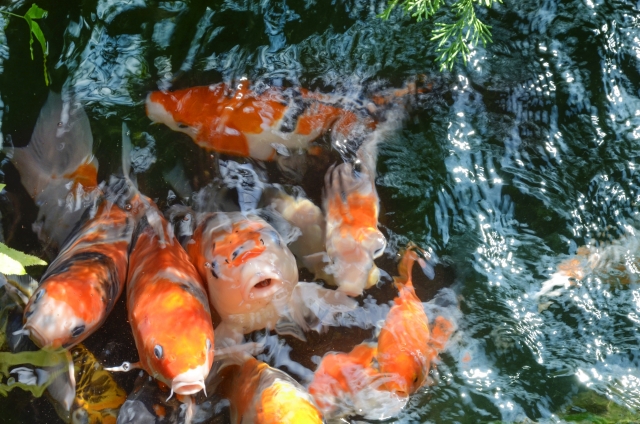For the last 2 months, I’ve been studying outline of Japanese art history from 8th century to 17th century ranging over 1,000 years. I was studying rather attentively and diligently writing down on a notebook and watching movies. The affluent world of songs, dances, and stories was there. By going through the path, I found plenty of interesting sights and I want to share the enchantment of Japanese culture not only with literature lovers but with Japanese culture lovers in general. The theme of this article is the manners of Japanese eroticism.
この二ヶ月の間、八世紀から十七世紀にかけて、およそ千年に渡る日本の芸術史の概略を勉強していた。歌、舞、物語における豊かな世界を、かなり真面目にノートを作り動画を見て、一心に学んでいた。そうするうちに見えて来たものがとても面白い事柄に溢れていたので、これは文学愛好者だけではなく、広く日本文化を愛する人に伝えたいと思い、この記事を書くことにした。今回の主題は日本における官能の作法である。
In the ancient times of 8th century of Japan, love affairs were perceived magnanimously and generously, it was considered human sexual intercourses would give power and life to plants and free sexual exchanges were permitted. Men and women gathered up at mountains and beaches and they exchanged poems and danced together. It was called Utagaki and it is intriguing that those poems are recorded and remained.
万葉の時代、八世紀ごろの恋や愛はとてもおおらかで、人の性行為が植物に実りや生命力をもたらすものと考えられており、古くは自由な性的交わりが許容されていた。男女が山や海に集まり、互いに歌を掛け合い踊る歌垣(うたがき)というものがあり、そこで歌が詠まれ、その歌が残されていることが興味を引く。
“I intercourse with someone’s wife, to my wife you can approach”
「人妻に 我も交じらむ 我が妻に 人も言問へ」
In Manyoshu, the Japanese oldest poetry compilation completed around 759, a poem expressing the line above is included. It is the record of so-called wild party. In this day and age young men and women gather up and have a drinking party and sing karaoke or dance together, later on they vanish to somewhere else. I is interesting that those gatherings are repeatedly thrown historically for more than 1,000 years.
という言葉を含む歌が万葉集(759年ごろ完成 巻九・一七五九番歌)に収められている。つまりはこれは所謂乱行パーティーの記録である。今でも若い男女がコンパをしたりカラオケで歌ったり踊ったりして、その後に連れ立ってどこぞかへ消えてゆくことがあるが、一千年以上も歴史的に繰り返されているのだと思うと面白い。
As times descended, Japanese culture that refined and purified the aesthetics of love romance as something utter importance came to avoid something direct and nurtured Japanese distinctive eroticism that inducing oozing poetic sentiment by refraining from direct expressions. Changing something direct into indirect expressions and projecting the indirect expressions onto another object. The workings of sublimating the inner self is connecting and expanding to literature, music, dance, movie, manga and anime, all sorts of art creation.
恋や愛や情緒を至上のものとして、その美学と感性を磨き上げて来た日本の文化は、時が下るにつれて、直截的なものを避け、抑えたものから色気や詩情が立ち上るという日本的エロスとでも言うべきものを醸成してゆく。直接的なものを間接表現に変え、その間接表現をまた別の対象に投影させてゆき、心の有り様を実態から昇華させてゆく営みは、文学、音楽、踊り、舞台、映画、漫画、アニメなどのあらゆる芸術表現の創出へと繋がってゆく。
It is included many of love poems in Kokin Wakashu (905) of poetry compiled by the order of the emperor. Japanese literature that honors the ancient history is the literature of love romance. In Japan, not only emperor, aristocrats, monks, but also commoners discussed over love and romance so earnestly and intently from the primitive age.
帝の勅命を受けて作られた古今和歌集(905年) などの勅撰和歌集にも、恋心を詠んだものが多く含まれる。悠久の歴史を誇る日本文学は恋の文学だ。日本では古来より、帝や貴族や僧侶のみならず、町人などの庶民に至るまで、熱心に色恋について論じてきた。
Literature transformed into music, dance, Noh, and Kyogen. And the core of the expressions is always love between man and woman. Manyoshu poetry compilation that completed in 8th century, and court literature such as The Tale of Genji in 11th century are filled with agonies and torments of love. Nowadays, pop songs are always singing of love, and it is the inevitable historical consequences.
文学は音楽や舞や能や狂言に形を進化させながらも、その表現するところの核は男女の恋愛模様だ。八世紀に完成した万葉集も、11世紀初めに成立した源氏物語などの王朝文学も、そこには恋や愛を巡る懊悩で埋め尽くされている。現在も流行歌はいつも恋を歌っているが、これも歴史の必然である。
Zeami the master of Noh establishment wrote “(the beauty of) flower blossoms in secrecy”, it depicts about stage effect, however it also implies sentimental sexiness that makes fruit in secrecy. By disclosure, beauty evaporates.
能の大成者である世阿弥は「秘すれば花」と書いた。これは舞台について言ったものであるが、全てをさらけ出すのではなく、秘することで生まれる情緒に色気が宿ると言うことを指してもいる。
In Heian era, around 11th century, female entertainers that sing and dance who were also prostitutes appeared. They were traveling singers. (World famous singer Utada Hikaru’s mother Fuji Keiko was a traveling singer that inherited the tradition.) Yoshiwara that was licensed by the Edo government red-light district (1617〜) used to be a basestation of pop culture like entertainment world of nowadays and it was highly attracted. It indicates the history that love romance was heightened to culture. There are many of Ukiyoe wood block prints of sexual intercourses with prostitutes of Yoshiwara, can be seen them on internet or can be bought the books of the Ukiyoe.
平安時代に現れた女性芸能者である歌い舞う遊女や傀儡子(くぐつ)は、旅回りの歌手だったこと(因みに世界的に有名な宇多田ヒカルの母、藤圭子は傀儡子の流れを引き継ぐ旅回りの歌手だった)、江戸幕府 によって公認された遊郭の吉原 (1617〜) が、今で言うような流行の発信地で芸能界のような憧れの世界であったことなども、日本の色恋を文化にまで高めて来た歴史の一端である。遊女との交わりや吉原の様子を描いた浮世絵も多く残されていて、現在でもネットで見れるし、その浮世絵の本を買うことも出来る。
It is Japanese peculiar sensitivity that arose love romance into art, and the history that avoided talking over or dealing with love romance passionately or eloquently, rather than that find excitement in secrecy by capturing hidden eroticism that was spilt off unable to hold up. We have been harboring highly intellectual and sentimental eroticism for over a thousand years.
国を挙げて恋や愛を芸術にまで高めて来たと言う歴史や、その恋模様を情熱的にあからさまにこと語るではなく、抑えたところから隠しきれないエロスが零れ落ちるところに情緒をみて密かに興奮するという在り方に、一種独特な感性がある。私たちは高等な知的な叙情を纏うエロスを、千年以上にも渡り育んで来たのだ。
The cover picture is Ukiyoe “Utamakura Sono Jyu” by Kitagawa Utamaro 1788. The man’s right eye between the hair of the woman tells it all. It is regarded as the master piece of sensual Ukiyoe of Utamaro.
表紙の写真は浮世絵、『歌満くら 其の十』喜多川歌麿/ 1788 (天明 8) 年 女性の鬢の間から細く見える男性のチラリ目が全てを物語る。歌麿が描いた春画の最高傑作と言われる。
Life is short; fall in love
いのち短し恋せよ乙女
参考文献:「浮世絵の解剖図鑑」牧野健太郎、株式会社エクスナレッジ、2020
「芸術教養シリーズ9 日本の芸術史 文学上演篇Ⅰ 歌、舞、物語の豊かな世界」矢内賢二 編、芸術学舎、2014






















